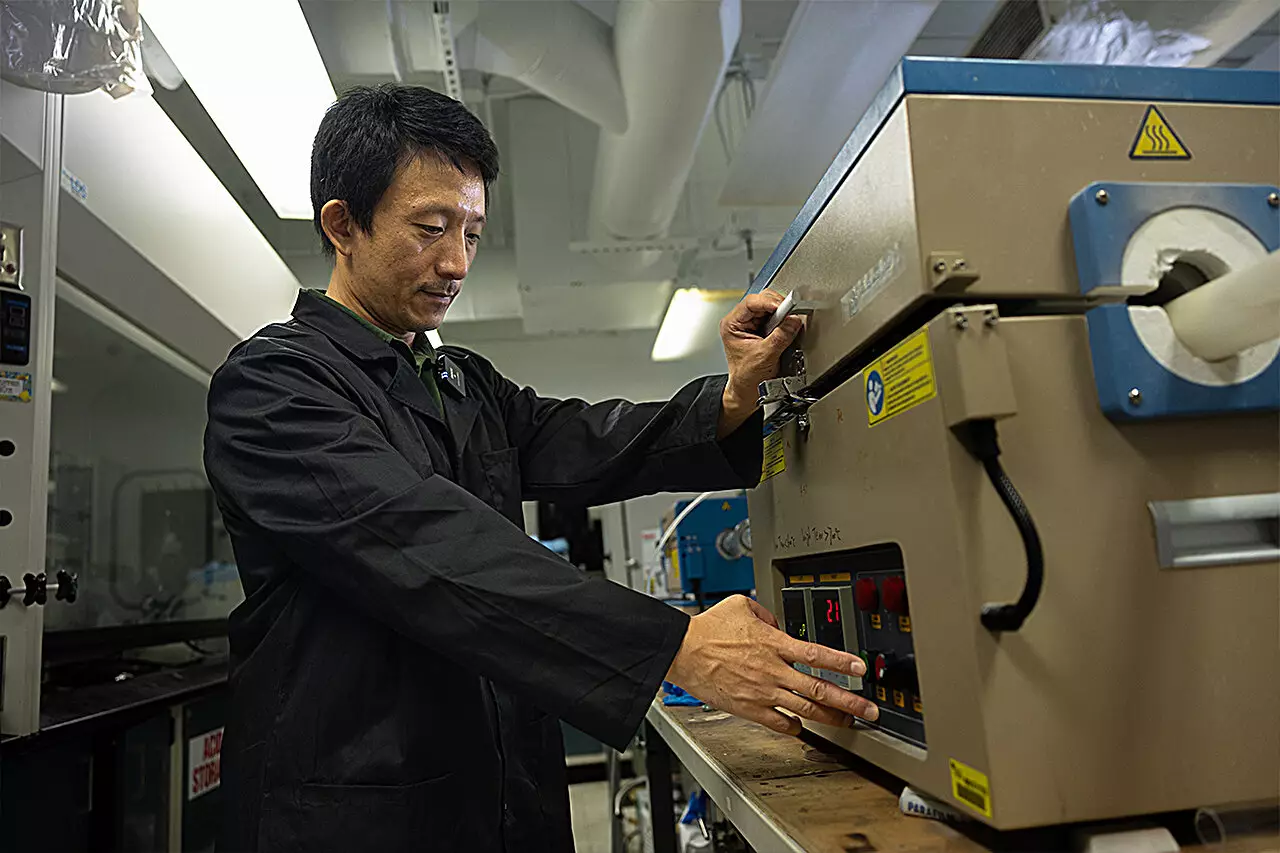As global temperatures rise and climate change becomes an increasingly pressing issue, the urgent call for innovative solutions to mitigate carbon dioxide (CO2) emissions rings louder than ever. With industries and power generation still heavily reliant on fossil fuels, the search for sustainable alternatives to reduce our carbon footprint is paramount. This challenge has inspired scientists and researchers worldwide to develop groundbreaking technologies aimed at capturing and repurposing CO2 emissions into useful products. One such significant advancement comes from the University of Central Florida (UCF), where researcher Yang Yang has enabled a new process that transforms captured carbon dioxide into valuable fuels and chemicals.
Yang, an associate professor at UCF’s NanoScience Technology Center, has engineered a sophisticated device designed to capture CO2 from the atmosphere and convert it into useful raw materials, specifically carbon monoxide and formic acid. Employing a unique microsurface composed of a tin oxide film and a fluorine layer, this device employs a bubbling electrode to extract CO2 from gaseous emissions, showcasing the potential for ecological sustainability through innovative chemistry.
A key aspect of Yang’s research is inspired by nature, particularly the lotus flower. The lotus is known for its remarkably hydrophobic surface, which allows water to bead up and roll off, providing valuable insights into surface engineering. Yang’s concept revolves around creating a similar hydrophobic surface to ensure efficient CO2 capture while preventing flooding in the system that would hinder the catalytic conversion processes. This design embodies a vital interplay between engineering and ecological inspiration, underscoring the importance of looking to nature for effective solutions.
Once CO2 is captured, it passes through an electrode where it undergoes a process known as electrocatalytic carbon dioxide reduction. This advanced method allows for greater customization compared to natural processes like photosynthesis. During this reaction, different pathways can be employed to convert CO2 into a variety of carbon-based chemicals such as methanol, methane, and ethanol, among others. This versatility offers exciting possibilities for producing essential chemicals, thereby creating an economically viable and environmentally friendly alternative to fossil fuels.
Yang emphasizes the importance of managing the amount of water interacting with the catalytic materials during the conversion process. Excess water can lead to the production of hydrogen gas rather than the desired chemicals, ultimately lowering the energy efficiency of the system. By developing materials that repel excess water and facilitate targeted reactions, the technology enhances overall efficiency while maximizing the utility of renewable energy sources.
The implications of Yang’s research extend beyond laboratory experiments; they present a potential paradigm shift in how industries approach carbon emissions. By integrating this carbon capture technology into large-scale infrastructures such as power plants and industrial facilities, there’s an opportunity to not only reduce greenhouse gas emissions but also produce raw chemical materials that can be reintegrated into various manufacturing processes. This dual function presents a compelling case for wider implementation in pursuit of sustainability.
Moreover, the device has the potential to harness intermittent electricity from renewable sources, such as solar and wind energy. This adaptation emphasizes Yang’s commitment to developing technology that aligns with the growing demand for environmentally sustainable practices that can be deployed flexibly across different energy landscapes.
Yang’s ongoing work represents a significant step towards realizing full-scale applications of carbon capture technologies. Supported by an interdisciplinary team from UCF’s Department of Materials Science and Engineering, the next phase involves scaling up the prototype to demonstrate effective conversion rates of CO2 into fuels and chemicals. As Yang notes, understanding the fundamental operations of this technology is crucial for moving into broader applications, where industrial-scale deployment could make a considerable impact on global emissions.
Additionally, Yang’s collaborations with prestigious research institutions, including Stanford and UC Berkeley, highlight the multifaceted approach needed to tackle climate change effectively. Sharing knowledge, resources, and innovative thinking across institutions is essential for driving advancements in environmental technology.
Yang Yang’s pioneering work at UCF represents a vital contribution to carbon capture technology, signaling a hopeful direction in the quest for sustainable solutions to climate change. By creatively mimicking natural processes and applying advanced engineering principles, Yang’s technology could redefine how industries interact with and mitigate carbon emissions. As we move toward an era prioritizing environmental responsibility, innovations like these are not just beneficial; they are essential for a sustainable future.

